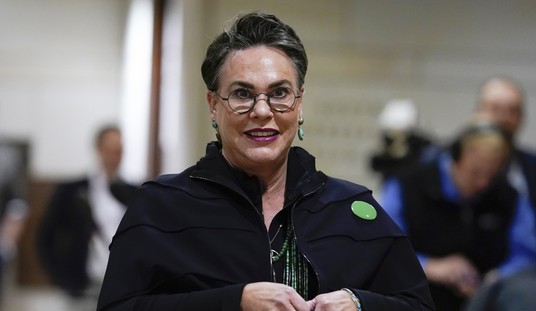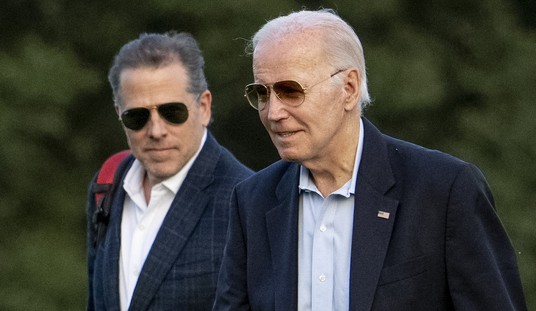From the diaries…
The President’s claim that Cedar Fall residents can get a gig for less than many Americans pay for premium cable is untrue. His statement that the Cedar Falls Utility network is 100 times faster than the average American Internet connection is, at best, a misleading and contradictory exaggeration, and at worst, absolutely false.
Last week, President Obama said “were gonna change” — i.e., preempt through federal fiat — state laws that prohibit their municipalities from owning broadband networks. (See embedded YouTube video at 14:00.) The White House supported his preemption plan with this “fact sheet” and a blog post listing “five things you need to know” about the President’s announcement. The problem is, several of the “facts” and other things the White House wants you to know are false, misleading, or contradictory.
If you live in Cedar Falls, can you really get a 1 gigabit per second Internet connection “for less than many Americans pay for premium cable?” Nope.
One of the things the White House wants you to know about the President’s announcement is, “If you live, or have a business in Cedar Falls, you can get a ‘gig’ . . . for less than many Americans pay for premium cable.” That’s not true. The price of a 1 gigabit per second (Gbps) Internet subscription in Cedar Falls is nearly 2 times higher than the average price of a premium cable package (according to the Federal Communications Commission (FCC)) and costs more than the top-of-the-line programming packages offered by Comcast, Time Warner Cable, DIRECTV, and DISH Network.
 For a 1 Gbps Internet connection, Cedar Falls Utility (CFU) charges $147 per month in the city and $152 per month in rural areas unless you also subscribe to its Cable TV service (starting at $23 per month for a “Basic TV” package). If you subscribe to CFU’s cheapest cable package and 1 Gbps Internet, your pre-tax monthly cost would be $158 for city and $163 for rural.
For a 1 Gbps Internet connection, Cedar Falls Utility (CFU) charges $147 per month in the city and $152 per month in rural areas unless you also subscribe to its Cable TV service (starting at $23 per month for a “Basic TV” package). If you subscribe to CFU’s cheapest cable package and 1 Gbps Internet, your pre-tax monthly cost would be $158 for city and $163 for rural.
According to the Federal Communication Commission’s most recent cable price report, as of January 1, 2013, the average price of a premium programming package (defined as the “next most popular service” after “basic” and “expanded” cable programming services) was $77.05. (See FCC Report on Cable Industry Prices at p. 7.) (The FCC defines the “next most popular service” to include at least 7 additional channels.) At $147 to $152 per month, Cedar Fall’s 1 gig service is nearly double the average price ($77.05 x 2 = $154.10) of a premium cable package as defined by the FCC.
The CFU 1 gig service also costs more than the most expensive programming packages offered by Comcast, Time Warner Cable, DIRECTV, and DISH Network. (According to the FCC, these 4 companies represented 68.6% of all pay-TV subscribers as of the end of June 2012. (See FCC 15th Annual Video Competition Report at pp. 61-62, Table 7.))
The price of Comcast’s “Digital Premier” package ranges from $125.60 to $145.25 per month (depending on location). The regular price of DIRECTV’s top-of-the-line “Premier” package is $129.99 per month. Time Warner Cable’s “Preferred TV w/Whole House DVR Service” costs $131.28 per month in CBIT’s zip code, and DISH’s “everyday low price” for its “Everything” package is $131.99 per month. All of these ultra-premium pay-TV packages are less expensive than the minimum $147 per month that CFU charges for its 1 Gbps Internet access service.
Based on this data, the President’s claim that Cedar Fall residents can get a gig for less than many Americans pay for premium cable is untrue.
Are Internet speeds in Cedar Falls really 100 times faster than the national average? Nope.
There is no evidence that Internet speeds in Cedar Falls are “almost 100 times faster than the national average.” This statement in the White House “fact sheet” assumes that the national average download speed is about 10 megabits per second (a Gbps is equivalent to 1,000 Mbps). It’s not clear what the President meant by this, but it fails to pass muster no matter how it’s construed.
The Administration’s own fact-finders show that, on average, American broadband networks offer speeds significantly faster than 10 Mbps. According to the National Broadband Map (maintained by the National Telecommunications and Information Administration in collaboration with the FCC), most of the population (82%) is covered by at least one broadband network offering download speeds of 50 Mbps or more — a minimum speed that is 5 times higher than the average 10 Mbps speed cited by the Administration.
The President’s statement fares no better even if he was making an apples-to-oranges comparison of the maximum advertised download speed offered in Cedar Falls (1 Gbps) with a national average based on actual peak download speeds. In its 2014 report measuring broadband, the FCC found that, on average, Internet service providers actually provide 101% of their advertised speeds. (See FCC 2014 Measuring Broadband America Report at p. 14.) The FCC also found that all ISPs that advertise download speeds of 50 Mbps actually deliver that speed or more during peak periods with one exception (Time Warner Cable missed the mark by a few percentage points). (See id. at p. 30, Chart 9.5.) In short, at least 82% of Americans are covered by at least one broadband network that can actually deliver well over 10 Mbps.
It’s possible the White House was comparing the advertised maximum speed tier offered for sale in Cedar Falls (1 Gbps) to a national average based on the advertised or actual speeds of the service tiers to which Americans actually subscribe. (See FCC Internet Access Services: Status as of December 31, 2013 at p. 30, Table 10.) But even that possibility doesn’t pass the straight face test. It’s misleading to compare an offer to sell with actual consumer choices in the marketplace and, even worse, it contradicts the President’s argument and federal broadband measurement.
The President was trying to make the point that the government-owned network in Cedar Falls is faster than private networks and still “affordable.” But, at a minimum price of $147 per month, the 1 gig speed tier in Cedar Falls is hardly “affordable” — it’s nearly 3 times more expensive than the 40 to 50 Mbps offerings of CFU’s competitors. A comparison of CFU’s offerings with comparable offerings by its competitors (CenturyLink and Mediacom) reveals that Cedar Fall’s government-ownership hasn’t made broadband more affordable.
 The White House’s reference to 1 gig service as “affordable” is also inconsistent with federal broadband measurement. The FCC doesn’t even bother to track the “the maximum speed tier offered by a company” in its Measuring Broadband America Report; it measures only “the most popular speed tiers” offered by ISPs — i.e., the maximum speed used by a major percentage of subscribers. (See FCC 2014 Measuring Broadband America Report at pp. 10, 13.) The FCC limits its measurements to popular consumer choices because its “goal is to advance high speed Internet access to all Americans,” and it believes “highlighting the maximum speed among the popular speed tiers is the most effective way to demonstrate the spread of high speed Internet access.” (See id. at p. 13 (emphasis in the original).) The President’s use of the fastest, most expensive speed tier offered in Cedar Falls as a basis for comparison is directly contradictory to the FCC’s approach.
The White House’s reference to 1 gig service as “affordable” is also inconsistent with federal broadband measurement. The FCC doesn’t even bother to track the “the maximum speed tier offered by a company” in its Measuring Broadband America Report; it measures only “the most popular speed tiers” offered by ISPs — i.e., the maximum speed used by a major percentage of subscribers. (See FCC 2014 Measuring Broadband America Report at pp. 10, 13.) The FCC limits its measurements to popular consumer choices because its “goal is to advance high speed Internet access to all Americans,” and it believes “highlighting the maximum speed among the popular speed tiers is the most effective way to demonstrate the spread of high speed Internet access.” (See id. at p. 13 (emphasis in the original).) The President’s use of the fastest, most expensive speed tier offered in Cedar Falls as a basis for comparison is directly contradictory to the FCC’s approach.
The President’s statement that the CFU network is 100 times faster than the average American Internet connection is, at best, a misleading and contradictory exaggeration, and at worst, absolutely false.
There are several more statements in the President’s announcement that contain fact shading, significant omissions, and exaggerations that I intend to address in the future. But the above analysis alone is enough to show that President Obama isn’t being straight with the American people about broadband.














Join the conversation as a VIP Member